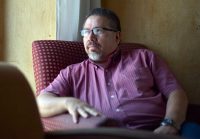Las variedades de la experiencia populista
La decisiva derrota de Marine Le Pen a manos de Emmanuel Macron en la segunda vuelta de la elección presidencial francesa fue una importante victoria para la Europa liberal. Pero fue una batalla, no la guerra. Hace muy pocos años, la idea de que uno de cada tres ciudadanos franceses votaran por Le Pen, del Frente Nacional, era inconcebible.
Los comentaristas han puesto el rótulo de “populista” a la ola de política demagógica que barre Europa (y gran parte del mundo). Pero más allá de la estridencia común a todos los movimientos populistas, ¿qué más comparten? Podemos (en España) y Syriza (en Grecia) son de izquierda.… Seguir leyendo »








